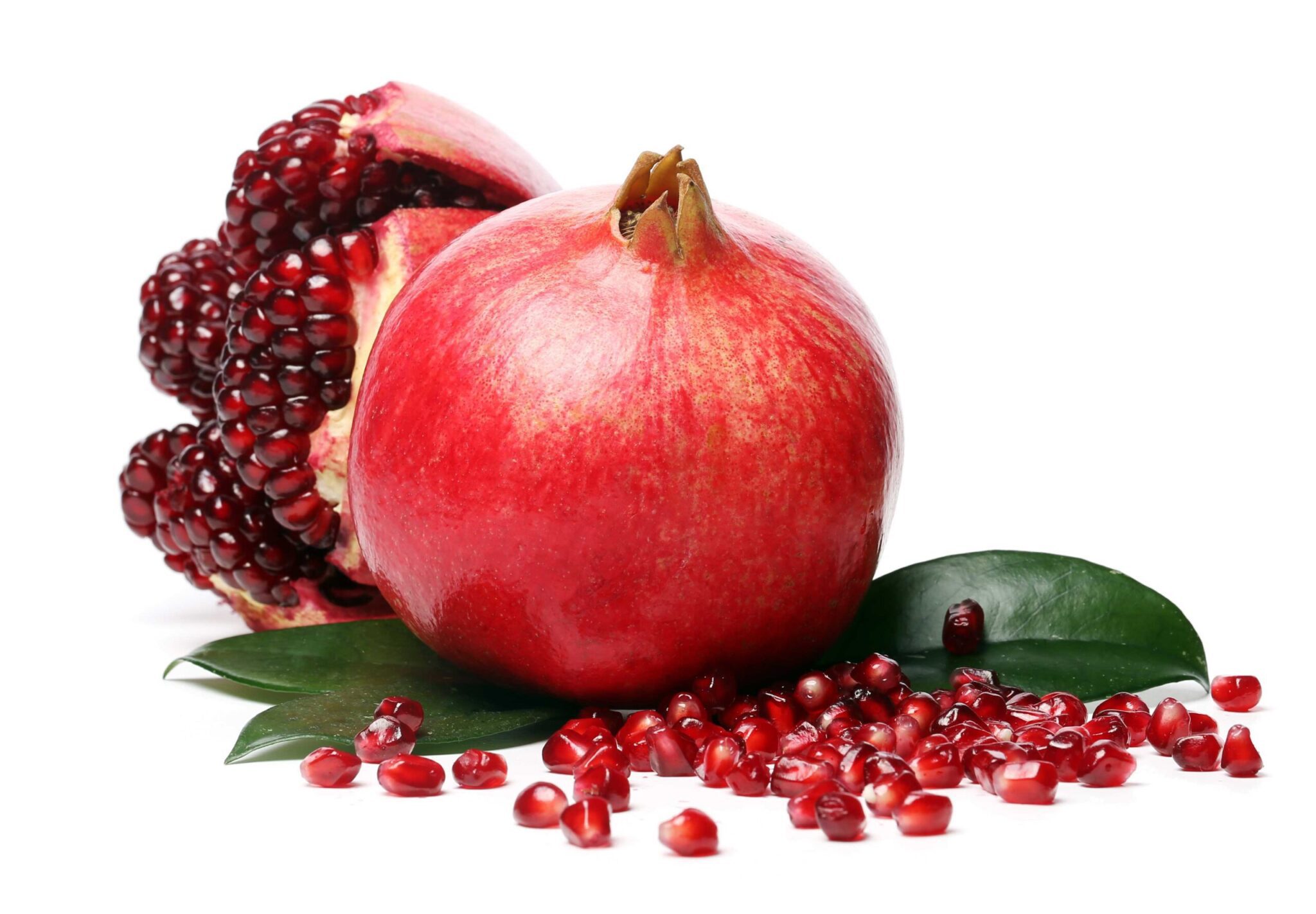
Introduction
Pomegranate is an important fruit crop known for its nutritional, medicinal, and economic value. It is widely cultivated in tropical and subtropical regions and is particularly suited for arid and semi-arid conditions.
Botanical Classification
- Botanical Name: Punica granatum
- Family: Lythraceae (earlier classified under Punicaceae)
- Chromosome Number: 2n = 16
- Origin: Iran and the Himalayas, later spread to the Mediterranean and India
- Common Names: Anar (Hindi), Dalimb (Marathi), Madulai (Tamil)
- Economic Importance: Used as a table fruit, in processing (juice, anardana, molasses), and in medicinal formulations.
Origin and Distribution
- Origin: Pomegranate is native to Iran and the Himalayan region of Northern India.
- Global Distribution: Iran, India, China, USA, Spain, Turkey, Afghanistan, Israel, and Egypt.
- Indian States Producing Pomegranate: Maharashtra, Karnataka, Gujarat, Andhra Pradesh, Rajasthan, Tamil Nadu, Madhya Pradesh, and Uttar Pradesh.
- Leading Producing State: Maharashtra (accounts for over 60% of India’s production).
Economic Importance
- High market demand for fresh fruit and processed products.
- Export potential: India exports pomegranates to UAE, Bangladesh, UK, Russia, and Saudi Arabia.
- Used in medicine, cosmetics, and ayurvedic preparations.
Climate and Soil Requirements
Climate
- Pomegranate is a tropical and subtropical fruit crop that thrives in semi-arid and arid regions.
- Temperature Requirement:
- Optimal temperature: 25-35°C
- Can tolerate up to 45°C in summer and -10°C in winter.
- Rainfall Requirement:
- Requires 500-800 mm of annual rainfall.
- Excess moisture during flowering and fruiting may cause fruit cracking.
- Sunlight: Requires full sunlight for better flowering and fruiting.
- Drought Resistance: Pomegranate is a drought-tolerant crop but requires irrigation during dry spells for good yield.
Soil Requirements
- Grows well in light loamy, sandy loam, and alluvial soils with good drainage.
- pH Range: 6.0-7.5 (slightly acidic to neutral).
- Can tolerate saline and alkaline soils but requires proper management.
- Avoid heavy clayey soils that retain water and cause root rot.
Popular Varieties of Pomegranate in India
- Bhagwa – Most popular, bright red, soft seeds, high yield (15-20 tons/ha).
- Ganesh – Light pink, soft seeds, sweet-tart taste, early maturing (10-15 tons/ha).
- Arakta – Dark red, soft-seeded, high TSS, good for processing (12-18 tons/ha).
- Mridula – High-yielding, deep red, soft-seeded, high juice content (15-18 tons/ha).
- Ruby – Medium size, deep red, high sugar content (12-16 tons/ha).
- Kandhari – Large-sized, hard-seeded, acidic, used for anardana (8-12 tons/ha).
- Jalore Seedless – Almost seedless, good table variety (10-14 tons/ha).
- Super Bhagwa – Improved Bhagwa, more disease-resistant (18-22 tons/ha).
- G-137 – Developed by ICAR-NRCP, resistant to bacterial blight (16-20 tons/ha).
Propagation Methods
Pomegranate is propagated by both sexual and asexual methods.
Asexual Propagation (Preferred for uniform plants)
- Cuttings:
- 20-25 cm long hardwood cuttings from mature, disease-free plants.
- Rooting hormone (IBA 500 ppm) enhances root formation.
- Air Layering:
- Used in nurseries, ensures early bearing.
- Budding:
- Shield budding on rootstocks like wild pomegranate.
Sexual Propagation
- Done by seeds, but not recommended for commercial cultivation as it leads to variability.
Planting and Orchard Management
Planting Time
- Best season: June–August (monsoon) and February–March (spring).
- Spacing:
- 5m × 5m (rainfed areas).
- 4m × 4m (irrigated areas).
- Planting Method:
- Pits of 60 × 60 × 60 cm filled with FYM and soil mixture.
Irrigation Management
- Young plants require frequent irrigation.
- During fruit development, irrigation should be given at 7–10 days interval.
- Drip irrigation is recommended for water conservation and better yield.
Training and Pruning
- Training: Plants are trained as bush or single stem systems.
- Pruning: Remove unwanted, diseased, and dead branches during the dormant period.
Flowering, Fruiting, and Harvesting
Flowering and Fruiting
- Three flowering seasons in India:
- Ambe Bahar (February–March) – Main flowering season in North India.
- Mrig Bahar (June–July) – Flowering in monsoon.
- Hasta Bahar (September–October) – Flowering in post-monsoon.
Pollination
- Self-pollinated, but cross-pollination by insects enhances fruit set.
- Honeybee activity is beneficial.
Fruit Maturity and Harvesting
- Fruits mature in 5–6 months after flowering.
- Harvesting is done when fruits develop a bright red color and produce a metallic sound when tapped.
Yield of Pomegranate
- Rainfed Conditions: 8-10 tons/ha
- Irrigated Conditions: 15-20 tons/ha
- Well-Managed Orchards: Up to 25 tons/ha
- Average Fruit Yield Per Tree: 10-15 kg per tree per year
- Economic Life of Pomegranate Orchard: 20-25 years
Pomegranate is a highly profitable fruit crop, especially in arid and semi-arid regions, due to its export potential and value-added processing (juice, anardana, molasses).
Major Pests and Diseases
Pests
- Pomegranate Fruit Borer (Deudorix isocrates) Larvae bore into fruits and damage seeds. Control: Neem oil spray, Bacillus thuringiensis (Bt), and insecticides like Cypermethrin.
- Aphids Suck sap from young shoots, causing leaf curling. Control: Neem oil spray, Imidacloprid.
- Whiteflies Cause sooty mold and weaken plants. Control: Systemic insecticides like Acetamiprid.
Diseases
- Bacterial Blight (Xanthomonas axonopodis pv. punicae) Causes leaf spots and fruit cracking. Control: Copper oxychloride spray, Streptocycline.
- Anthracnose (Colletotrichum gloeosporioides) Dark spots on fruits and leaves. Control: Mancozeb or Carbendazim spray.
Post-Harvest Management
- Storage: Fruits can be stored at 5°C for 2–3 months.
- Processing Products:
- Juice
- Pomegranate aril extraction
- Pomegranate molasses
- Dried seeds (Anardana)

